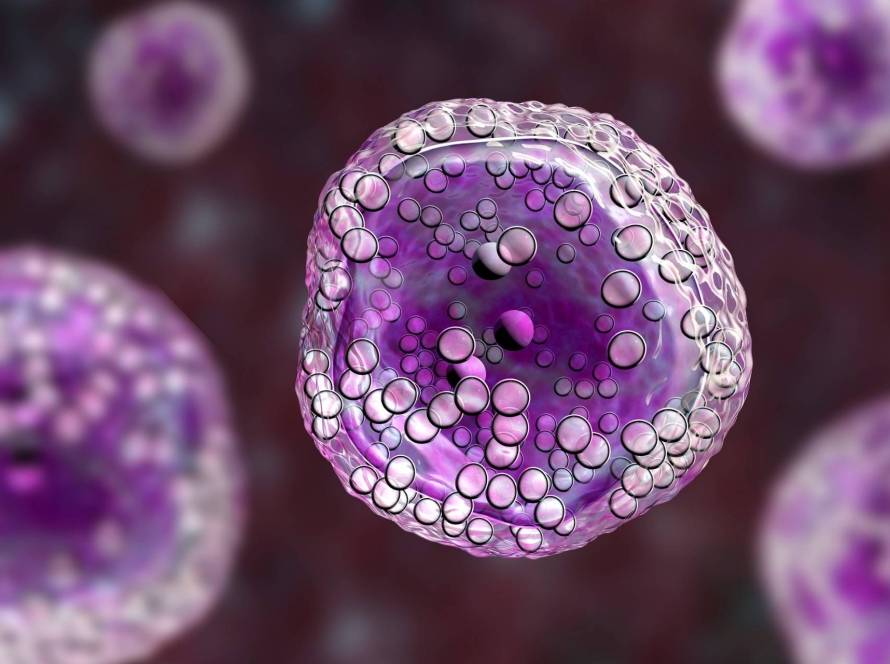Cellular reprogramming stands as one of the most important breakthroughs in medical science. The technology has grown into a powerful medical research tool, especially when you have conditions that need studying and treatment.
This piece will show how cellular reprogrammings inner works, its medical applications and its role in treating conditions once thought incurable. We’ll looking for the latest research findings, current uses and their impact on future medical treatments.
What is cellular reprogramming
Cellular reprogramming is the process that erases and remodels epigenetic marks in cells, which turns back their biological clock. Scientists can now transform cells from one tissue type to another. This breakthrough has created new possibilities in medicine and research.
The natural aging process of cells
Cells go through major changes as they age that affect how they work. They grow larger and lose their power to divide properly. On top of that, waste products build up inside them, including lipofuscin (a fatty brown pigment) and other fatty substances. The connective tissues get stiffer, which makes organs, blood vessels and airways less flexible. Cell membranes also change, which blocks the exchange of oxygen, nutrients and waste products.
Discovery of cell fate reversal
Scientists reached many milestones to discover cell fate reversal. In 1962, John B. Gurdon showed the first practical use of cell reprogramming through nuclear transfer in frogs. Yamanaka and James Thomson made a breakthrough in 2007, when they do the first isolation of human induced pluripotent (iPS) stem cells.
Scientists found that there was a way to make somatic cells return to an earlier stage of development by adding specific transcription factors. This method, called factor directed reprogramming, lets cells take on features as with embryonic stem cells that can form any tissue in the body.
Key players in cell reprogramming
The yamanaka factors, OCT3/4, SOX2, KLF4 and c-MYC, drive cellular reprogramming. These transcription factors work as a team to quiet genes specific to somatic cells and wake up genes found in pluripotent stem cells.
Scientists now use chemical reprogramming approaches that are precise and easy to control when changing cell fate. This progress helps researchers capture many stem cell states, from totipotency to stable somatic fates in lab conditions.
Scientists need to understand how pluripotent cells maintain their identity to establish these procedures. Factor directed reprogramming to pluripotency is now routine, but remains complex and needs refinement. Researchers expect to improve reprogramming methods as they learn more about pluripotency maintenance and cell transformation.
How cellular reprogramming works
The complex process of cellular reprogramming depends on specific molecular mechanisms that coordinate how specialized cells change. Scientists need to understand these mechanisms to advance regenerative medicine and therapeutic applications.
The role of yamanaka factors
Scientists made a breakthrough when they found yamanaka factors, Oct4, Sox2, Klf4 and c-Myc (OSKM). These transcription factors work as ‘pioneer’ factors that open chromatin regions and activate genes needed for pluripotency. These factors bind to open chromatin regions first and occupy both active and quiet gene promoters.
Epigenetic changes during reprogramming
Cells go through major epigenetic changes during reprogramming. The process starts with changes that focus on CpG islands, which respond better to transcription factor activity. The cells then undergo DNA demethylation of pluripotency gene promoters, reactivate silent X chromosomes and reset histone modifications across the genome.
A discovery showed that combining seven small molecules could reprogram mouse embryonic fibroblasts without Oct4. This creates chemically induced pluripotent stem cells (CiPSCs). These cells show gene expression patterns and epigenetic states like embryonic stem cells.
Timeline of the reprogramming process
According to studies, cell reprogramming happens in clear stages:
- Initiation phase: cells show big changes in gene expression and start mesenchymal to epithelial transition;
- Maturation phase: Oct4 and Sox2 targets gradually increase their expression and activate more pluripotency genes;
- Stabilization phase: the pluripotency network becomes fully established.
Scientists have refined their methods to reprogram cells to a ground state of pluripotency that matches embryonic stem cells closely. They add specific cytokines and small molecule inhibitors to the standard reprogramming mix.
Current applications in medicine
Scientists have made exciting breakthroughs in cellular reprogramming that show promise for treating many medical conditions. This technology helps medical experts tackle complex health challenges that nobody thought possible before.
Treatment of age related diseases
Cellular reprogramming brings groundbreaking possibilities to treat age related disorders. Research shows that partial reprogramming can work to improve many age related characteristics, including healthspan and tissue regeneration. Scientists have showed remarkable results where reprogramming techniques extended the lifespan of mice by an impressive 109%.
This technology does much more than just extend life. Scientists continue to make progress in treating specific conditions. Heart related conditions show some of the most exciting developments. Short term cardiomyocyte reprogramming shows most important improvements in heart regeneration after myocardial infarction. Research teams have turned cardiac fibroblasts into working heart muscle cells. This brings new hope to patients with heart damage.
Tissue regeneration advances
Tissue regeneration has taken huge steps forward through cellular reprogramming. Scientists now use different methods to create various types of working cells, like liver, neural, cardiac and blood cells.
Researchers from UC San Francisco and Cedars-Sinai have developed a new way to prompt stem cells to form specific organs. Scientists developed engineered cells that create structures known as “synthetic organizers.” These organizers send biochemical signals, called morphogens, to guide stem cells in developing into specialized tissues and organ like formations.
Impact on disease treatment
Cellular reprogrammings potential is changing how we treat complex diseases. Recent breakthroughs and advances in technology have created new possibilities for medical treatments in conditions of all types.
Regenerative medicine applications
Patient specific induced pluripotent stem cells (iPSCs) serve as effective tools for drug screening, toxicology studies and cell replacement therapy. These cells provide endless patient specific material that scientists can separate toward any lineage affected by disorders. Research teams have created disease models by reprogramming cells from patients with cystic fibrosis, Huntingtons disease, Parkinsons disease and sickle cell anemia.
Treating genetic disorders
Cellular reprogramming brings promising solutions through gene editing technologies for genetic disorders. Scientists have showed success in correcting genetic mutations in patient specific iPSCs before separating them into desired cell types. This approach creates healthy, functioning cells that doctors can transplant back into patients without immune rejection risks.
Sickle cell anemia treatment stands out as a prime example. Scientists now repair the mutated hemoglobin gene in patients iPSCs using CRISPR/Cas9 technology. The corrected cells then separate into functional hematopoietic stem cells and produce healthy red blood cells after transplantation.
Age related disease interventions
Cellular reprogramming has profoundly affected age related conditions. Research shows that partial reprogramming improves muscle and pancreas regenerative capacity in aged mice. This approach goes beyond simple tissue repair:
- Neural regeneration to treat neurodegenerative diseases;
- Cardiac tissue repair after heart damage;
- Restoration of pancreatic function in diabetic conditions.
Personalized medicine potential
Cellular reprogrammings most exciting aspect lies in its potential for personalized medicine. Scientists create individual disease models that accurately reflect a patients genetic makeup by generating patient specific iPSCs. This breakthrough allows:
- Development of tailored therapeutic strategies;
- Testing drug responses before administration;
- Identification of potential adverse reactions;
- Creation of personalized cell replacement therapies.
According to studies, this technology is a chance to understand disease mechanisms and develop targeted treatments. Stem cell derived models now provide experimental platforms to measure and reduce drug associated toxicity in disorders where human specific cardiac or renal toxicity limits treatment options. These models help screen new drugs that can reverse cellular pathology in vitro, which increases the chances of successful disease treatment in patients.
Challenges exist, but cellular reprogramming technology promises to transform medicine completely. Better techniques, successful clinical trials and breakthrough research suggest we’re stepping into a new era of regenerative medicine. Age related diseases might soon become manageable conditions instead of inevitable outcomes.
Learn more about:


